After taking Mjällby AIF to the Allsvenskan – the top-tier of Swedish football, Milos Milojevic departed and worked as the assistant manager of Red Star Belgrade. The former Torino midfielder, Marcus Lantz, became the new head coach, impressing the fans by knocking Djurgårdens out of the Svenska Cupen.
However, their start in the league: one draw and two losses were not the best. So far, Mjällby have never played in a back four. They switched the formation between a 3-4-2-1 and a 5-3-2, spending most of the time to defend.
In this tactical analysis, we will dissect the approach of the 44-year-old manager, introducing the strengths and weaknesses of his general tactics and philosophy by observing the first three Allsvenskan games.
Offensive phase
The offensive approach of Lantz was quite simple, and it was without complex build-up and movements. They attacked according to the shape: 3-4-2-1, adopting the 3-2 shape in the first phase.
Since the tempo and ball circulation was slow in general, Mjällby were facing difficulties to reach the pivots and develop the attack centrally. The opponents always had time to contain the central options. As a result, the wide centre-backs were often the initiators of an attack.
The main roles of the pivots were to maximize the positional superiority to occupy the opponents centrally, creating rooms for the wide centre-backs to carry the ball forward. The carrier was Viktor Agardius in most cases, who could operate as a false left-back. This released the wing-back: Jonathan Tamimi to an advanced zone.
Mjällby kept developing the attacks at flanks unless Besard Sabovic came and asked for the ball. They tried to bypass the midfield/second line by finding the striker directly. Because of this tactic, the wide centre-backs had more forward passes than any other teammates, except David Bantanero.
The lone striker: Jacob Bergström was keen to make horizontal or diagonal movements as a target in the offensive third. Combining with the above approach, this was a simple way for Mjällby to enter the final third. Here, Agardius (#8) neglected the central options and found Bergström directly.
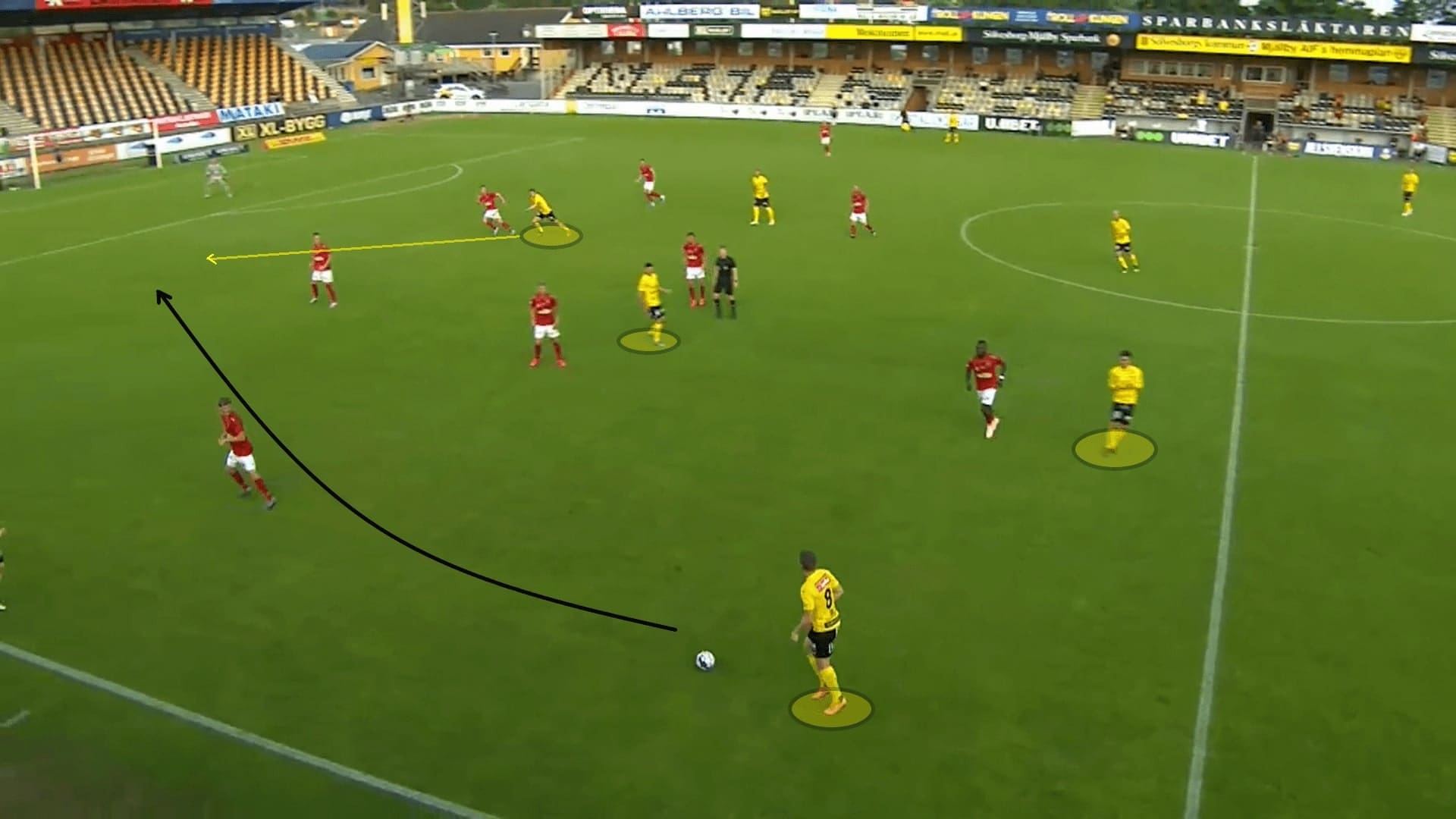
However, failing to create the dynamics on the flanks was a weakness of the team. They lacked a pacey wide player or a skilful dribbler that possessed qualitative superiority to exploit wide spaces. The 7.02 crosses per 90 and 16.28 dribbling per 90 of the team has suggested the struggle out wide as these stats were the second-lowest in Allsvenskan.
Although Joel Nilsson often provided a supporting run on the right, he seldom hit the first-time crosses, and the crossing opportunities were gone. This was a reason that caused the low xG of Mjällby: 2.24, second-lowest in the league.
Here, a 2 v 2 numerical equality in wide areas is evident, but Mjällby failed to create any dynamics by dribbling. When passing, the option was predictable and hardly could they whip a cross. We might be expecting more in the future after the team has trained longer under Lantz.
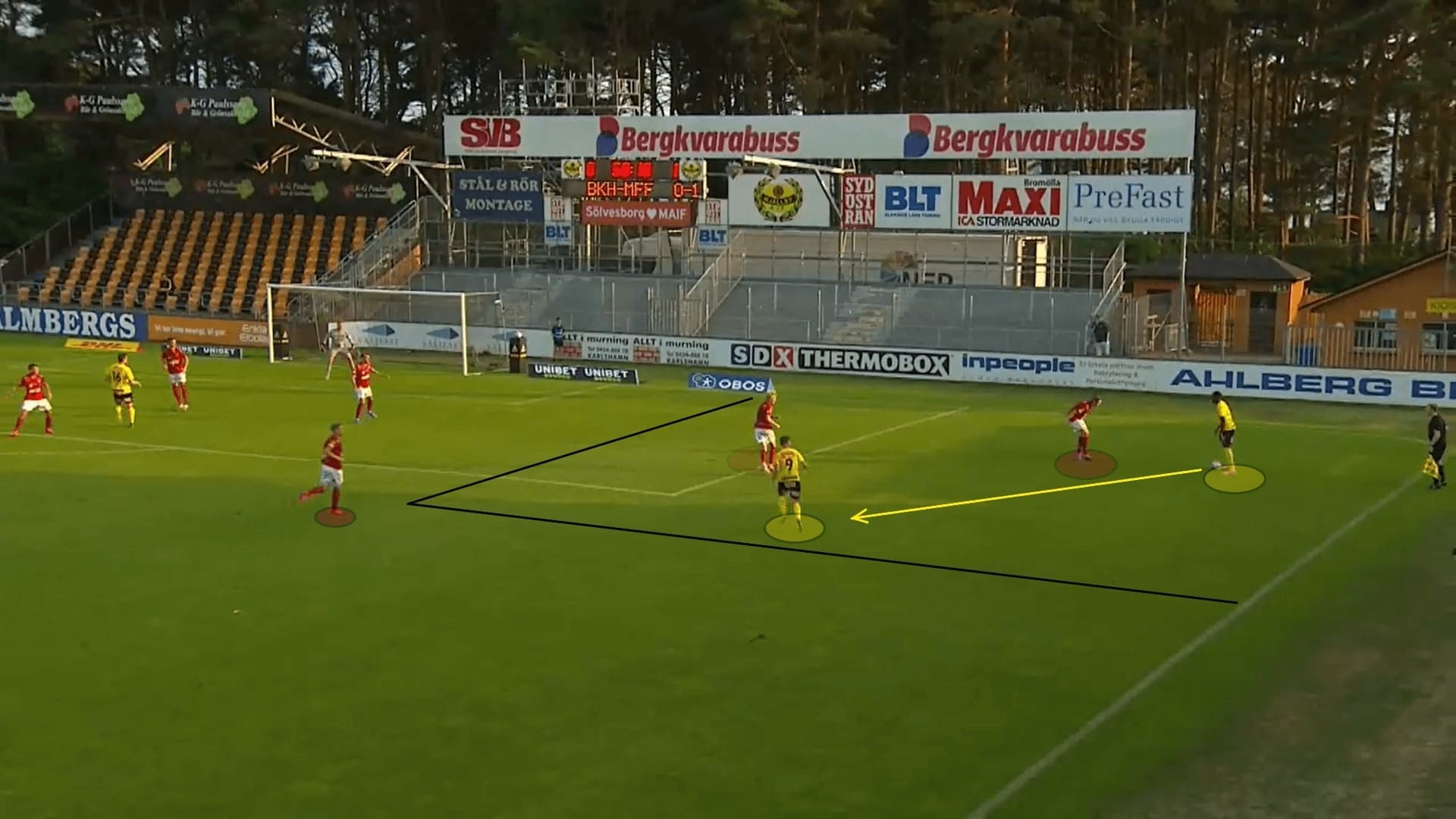
Bergström has been the first-choice striker of the team, but if Lantz needed a goal, they could throw an additional striker: Moses Ogbu as the second target man at the frontline. This allowed Bergström to focus on running behind the defence or picking the second balls.
Here, the wide centre-back: Jesper Löfgren was tasked to play the ball forward. The long ball was played to Ogbu directly, who tried to utilise his physical strength and hold up plays in the opposition third.
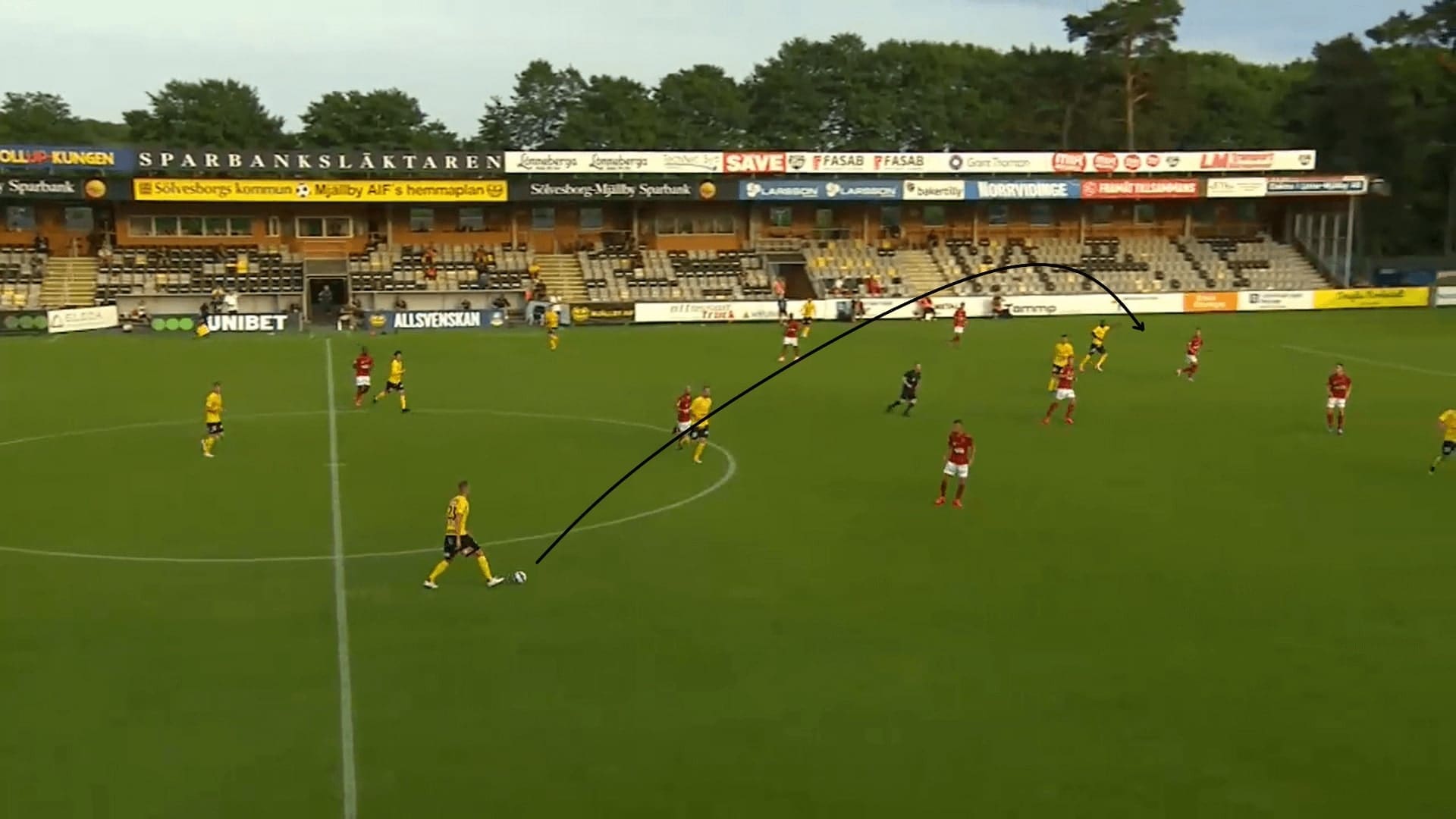
Key player: Besard Sabovic
Among the squad, we identified Sabovic as a key player of the team in this analysis. Born in North Macedonia, joining as a free player from Djurgårdens, the attacking midfielder was the hope to create something in the final third.
Firstly, we summarised the total xA and xG of Mjällby players in this scatter chart. We could see the midfielder, Bantanero, was a creator, and Löfgren has the second-highest xG because of the set-pieces. On top of all, Sabovic impressively contributed 0.65 xG and 1.01 xA, being better than his teammates in both metrics.
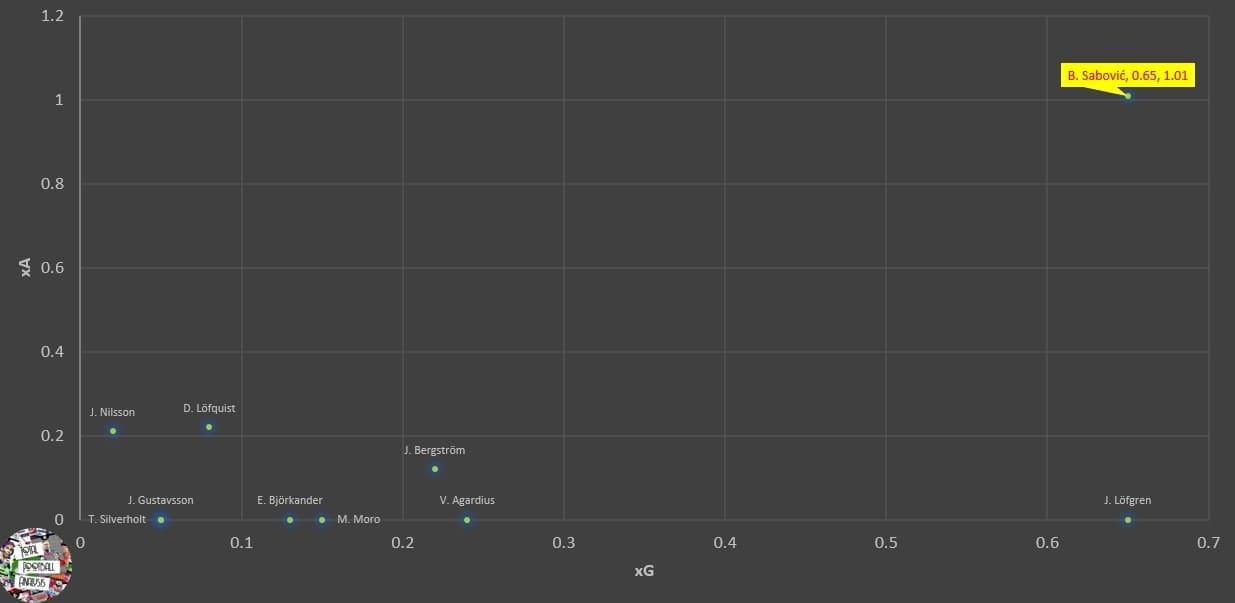
Sabovic has been the main man in Mjällby’s attack, especially in the final third. The North Macedonian midfielder has an offensive mindset, always trying to create something. If you stop Sabovic, you suffocate many Mjällby opportunities early on.
Here, facing a block and three men in front of him, Bergström was picked by a pass which cleverly travelled between players. Actually, Sabovic could go to the left flank with a less risky pass, what the Mjällby #14 offered was the creativity which made the team less predictable offensively. The opponents were not expecting this pass.
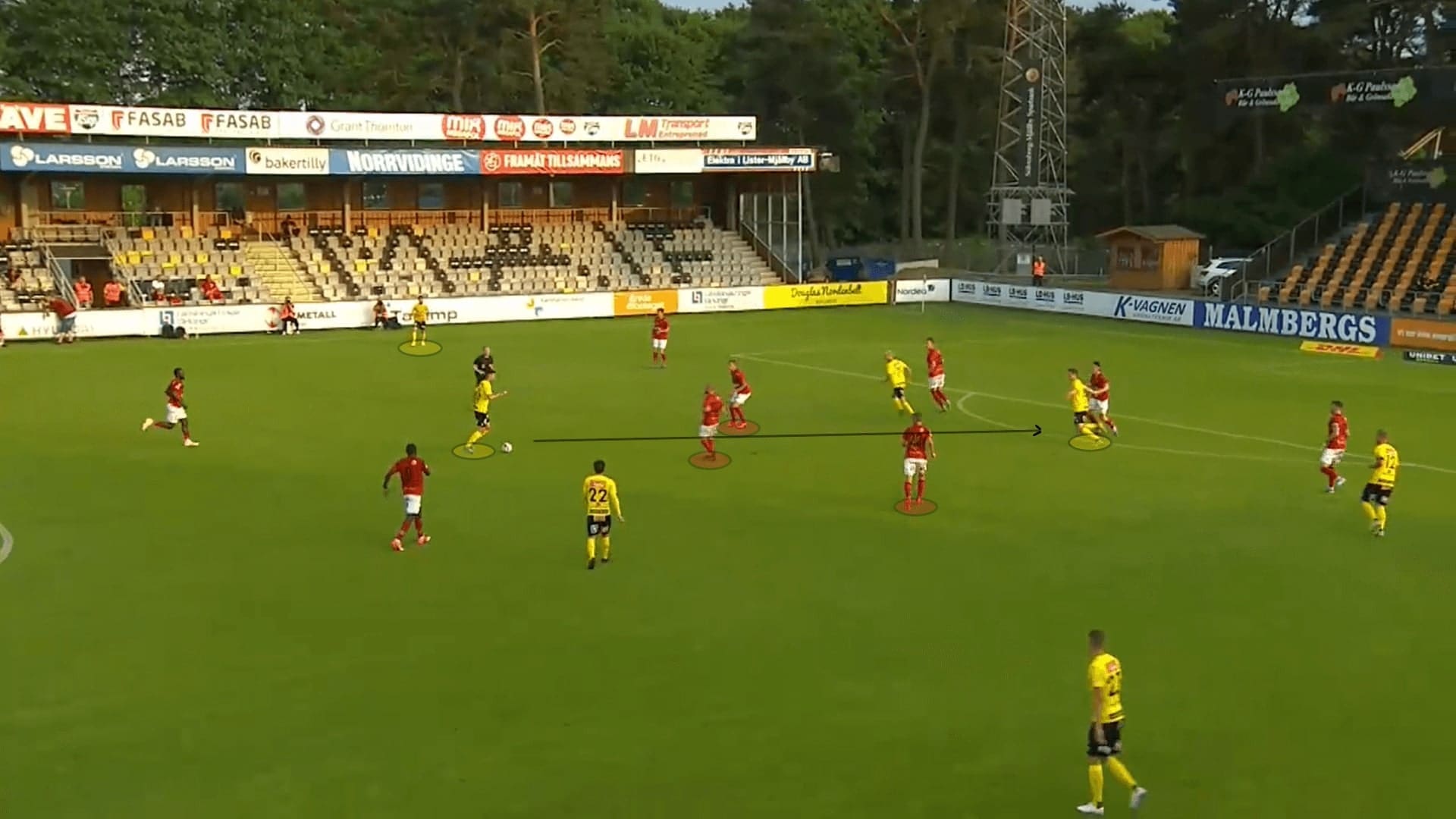
Apart from the passing, Sabovic also possesses the qualitative superiority, using his dribbling to disrupt the oppositions’ defence. In this image, he carried the ball forward into the defensive block, taking three to four players with him, which created spaces for his teammates ultimately.
Therefore, this generated a 1 v 1 opportunity for Bergström against a defending player, and if Sabovic could play the pass, Mjällby had a pretty good chance to score.
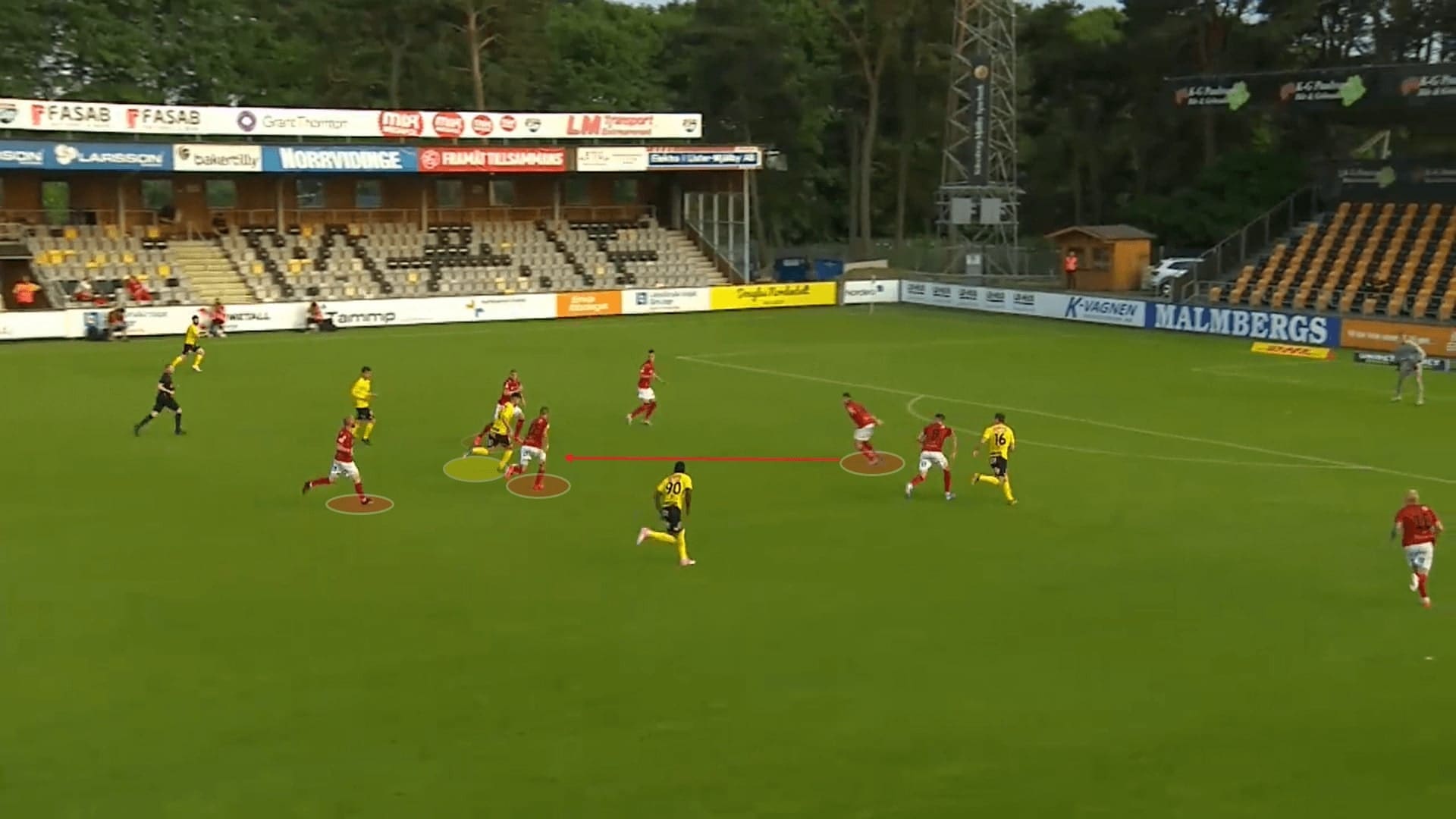
Offensive transitions
As mentioned, Mjällby spent more time defending than attacking, there were not too much to talk about in the positional plays. What Lantz needed was a good transition phase that allowed the team to hit the exposed and disorganized defence.
In the offensive transitions, the striker was used as a target man, operating in the central third and tried to release the wide players. He had to fight for every clearance, converting them into the counter-attacks. The wing-backs, especially Nilsson were quick to provide the width and support the counter-attacks.
Since Bergström was a right-footed player, it was more natural to release the right wing-back than the other flank. As an example, Bergström held the ball at the centre and passed to the runner on his right. Meanwhile, the rest, including #14 Sabovic below, continued the forward runs to attack the box.
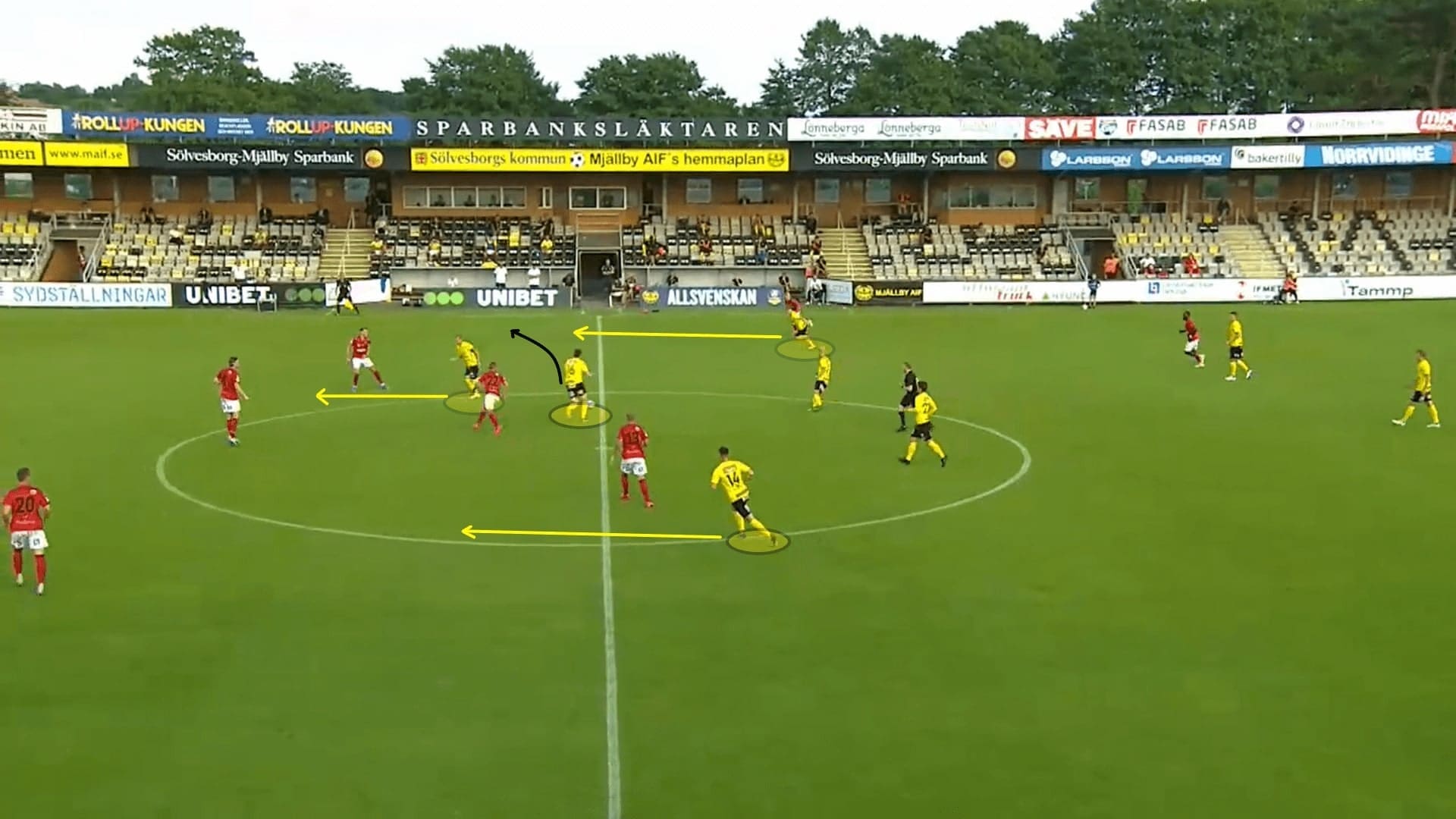
In case Bergström could not release the wide players because of the pressure behind or the suboptimal body orientations, the third man plays were used to achieve the same objective.
Here, Bergström returned the ball to David Löfquist, and Nilsson was already making the forward run and was released afterwards.
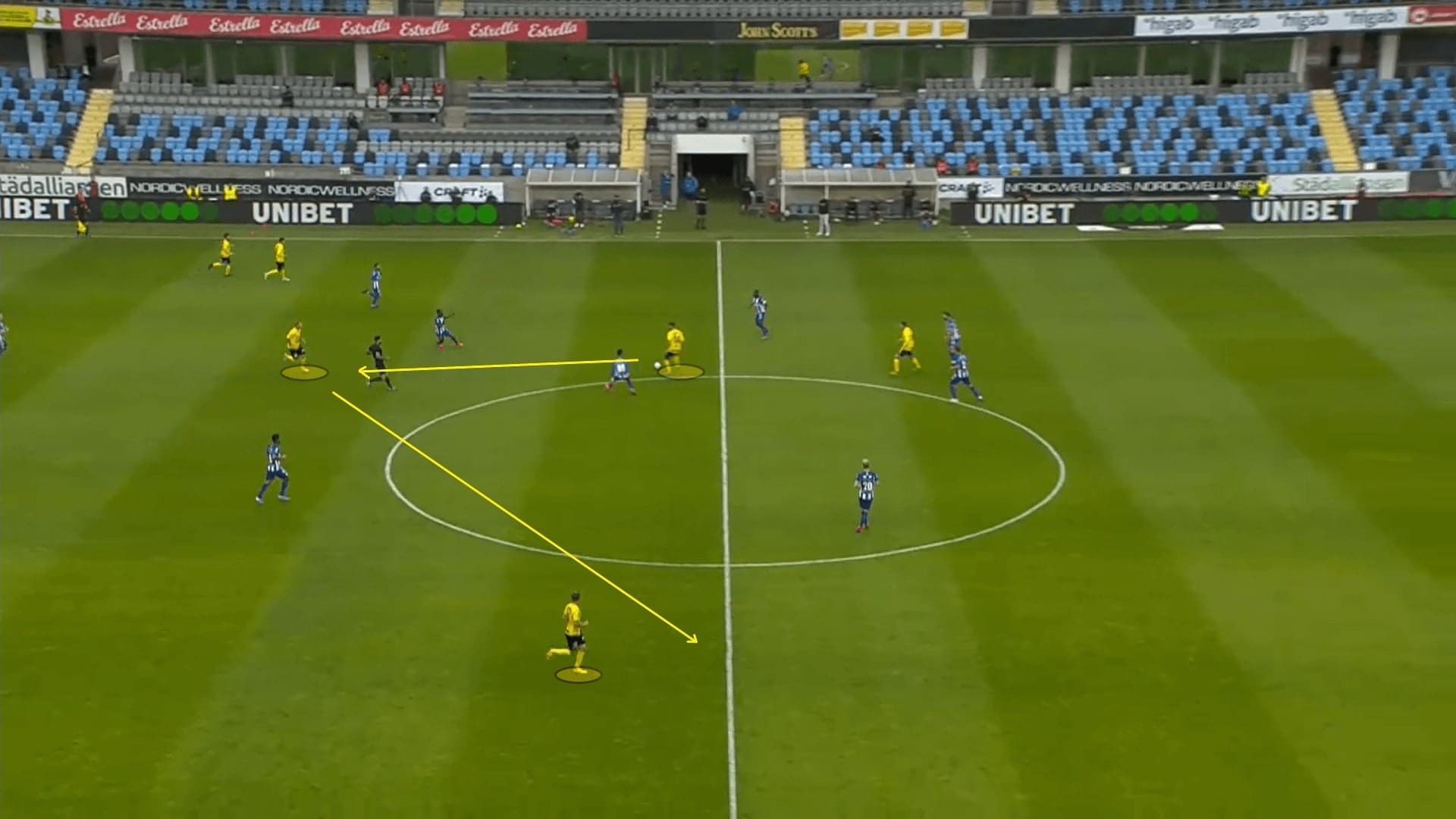
Nilsson was often quick to exploit spaces at flanks, especially when the opponents’ wide defender was pushed high. The 25-year-old Swedish would try to carry the ball forward, into the offensive third.
Below are the actions in the counter-attacks of Nilsson. There were many accelerations and dribbles in this phase, and his 32.39% of xGChain in the counter-attacks was definitely in the upper-quartile when comparing with the rest in Allsvenskan.
But, as we mentioned, Nilsson somehow lacked dynamic superiority or qualitative superiority. Even given some 1 v 1 opportunities, sometimes Mjällby could not seize the moment to attack a disorganised defence.
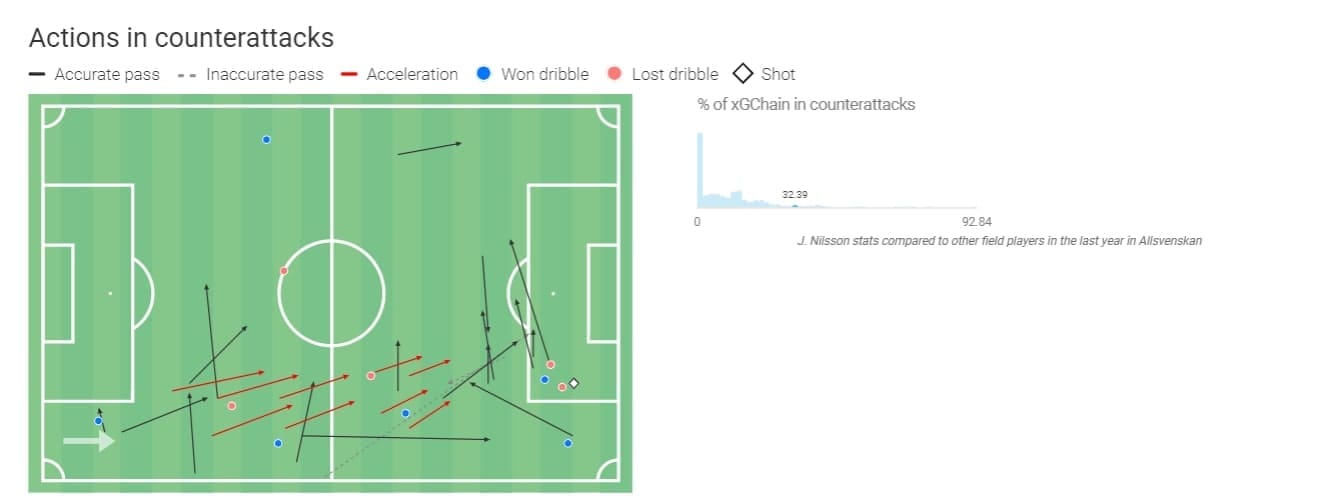
The pressing
Mjällby’s average PPDA so far was the second-lowest in Allsvenskan 2020. When pressing, the shape, intensity, angles, coverage, and compactness were suboptimal. Therefore, it was not difficult to bypass the press.
The pressing of Mjällby was disorganised, either one of the front three initiated to press voluntarily but the defensive supports was not guaranteed. Also, Lantz’s players often commit the first line to press the opponents’ first line, leaving spaces in the centre. This structure could be beaten by a numerical overload.
Here, Sabovic stepped up to engage the wide player. However, his teammates were far away from the pressuring area. Since the North Macedonian midfielder failed to cover the central passing lane while pressuring the ball, the midfield option was found as a leeway to escape from the press.
In this case, we would question the positionings of the midfielders, they were not supportive in the pressing. Instead of providing the defensive covers, Viktor Gustafson and Jesper Gustavsson tended to protect spaces in front of the defence. The attacking team could easily find the unmarked midfield players to progress.
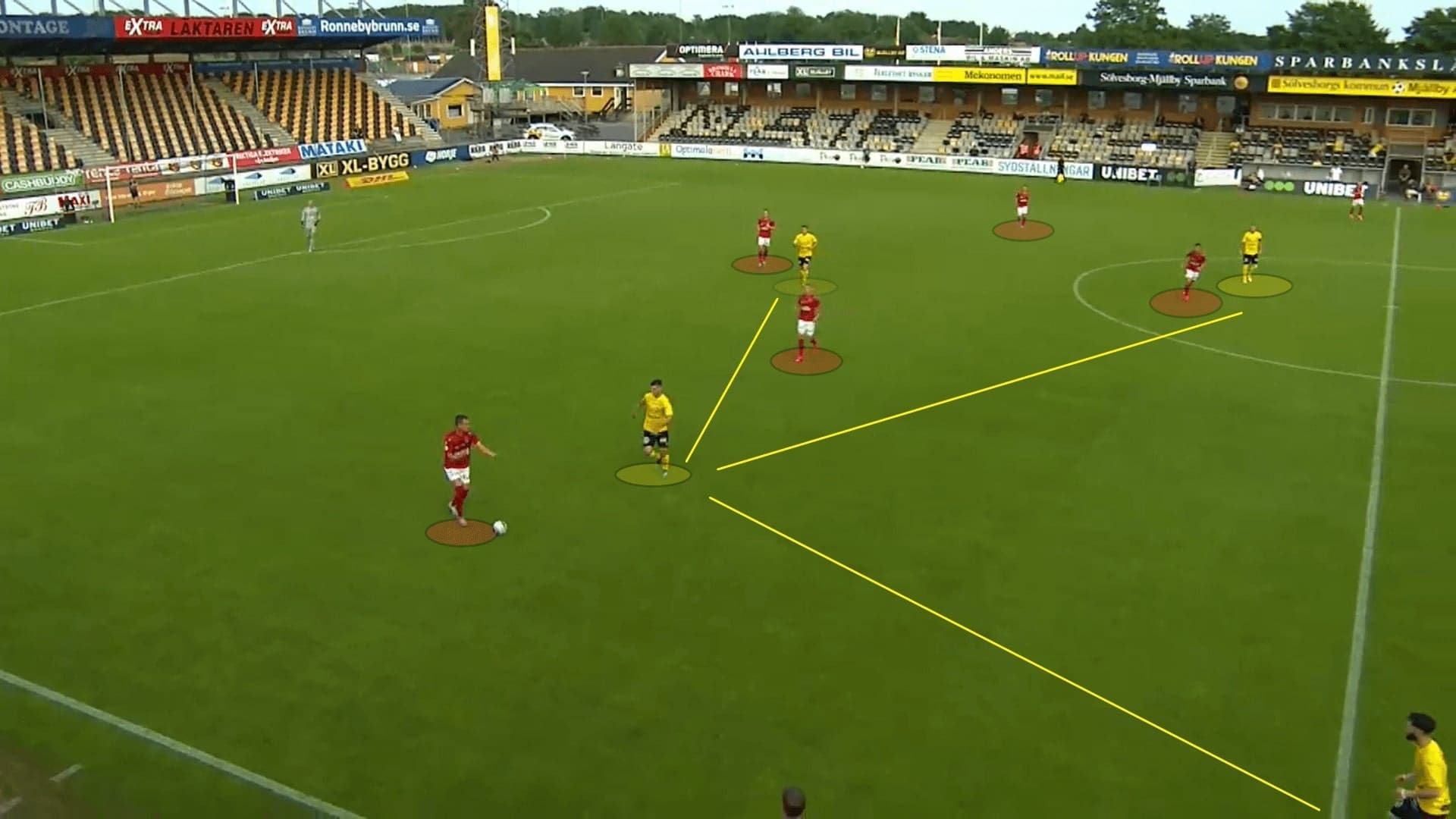
When defending at the wide areas, Mjällby put higher pressure on the opponents by committing most players to the ball side. Apart from committing the midfielders and wing-back forward accordingly, even the wide centre-back followed the dropping option.
The intention was usually shutting the passing lanes around the ball, using the wing-back marking the forward option (usually the opposite wingers) and intercepting any poor pass to the centre. Sabovic should close the return passing lane. However, they need quicker sprints and more physicality to win the ball back in the top-tier. Sometimes the shape was right, but the level of pressure did not trouble the attacking team enough.
This case below was an example of lacking compactness. As the weak side second striker/attacking midfielder, Löfquist was not placing himself correctly to maintain compactness. Yusuf was unmarked as the free man to break the press.
The inefficiency of the press was outlined below, two players marking the same target in the central third, which was unnecessary, Gustavsson could choose a better position and marked Alhassan Yusuf (#28). Meanwhile, Bantanero should try to intercept the in-ball, but better positioning is needed too.
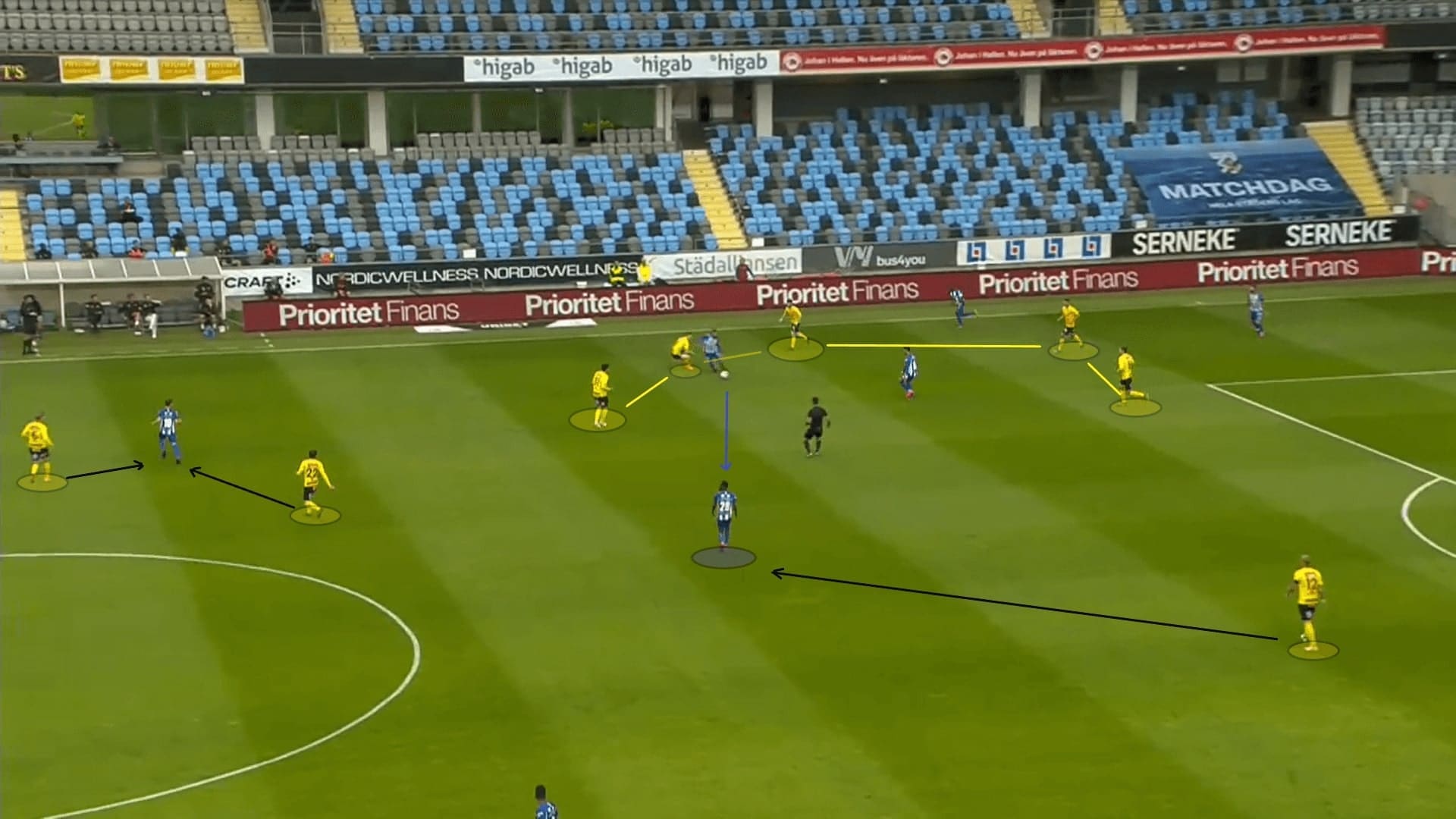
At this stage, we are yet to see the pressing triggers apart from the pressing at flanks. We understood the midfielders would stick to the receiver if discovering their suboptimal body orientations. This was the most successful strategy so far: coming from the back(blindside), challenging and regaining possession.
Here, we saw some elements as explained: using the wing-backs to mark the winger; Sabovic was approaching the wide player. This approach of leaving two midfielders at the centre was a bit risky if the opponents were playing with a midfield trio. A 2 v 3 numerical deficit was clearly identified below.
Therefore, the Mjällby midfield duo had to maximise the positional superiority, marking players by maintaining a reasonable distance between more than one opponent. This time, Gustavsson did correctly, as his position should be accessible to both targets. His partner: Gustafson went to intercept the in-ball.
Again, we saw Löfquist not joining the defence, staying away from the teammates. Maybe, Lantz could consider committing the far side second striker/attacking midfielder as an extra man in the midfield, which prevented an overload.
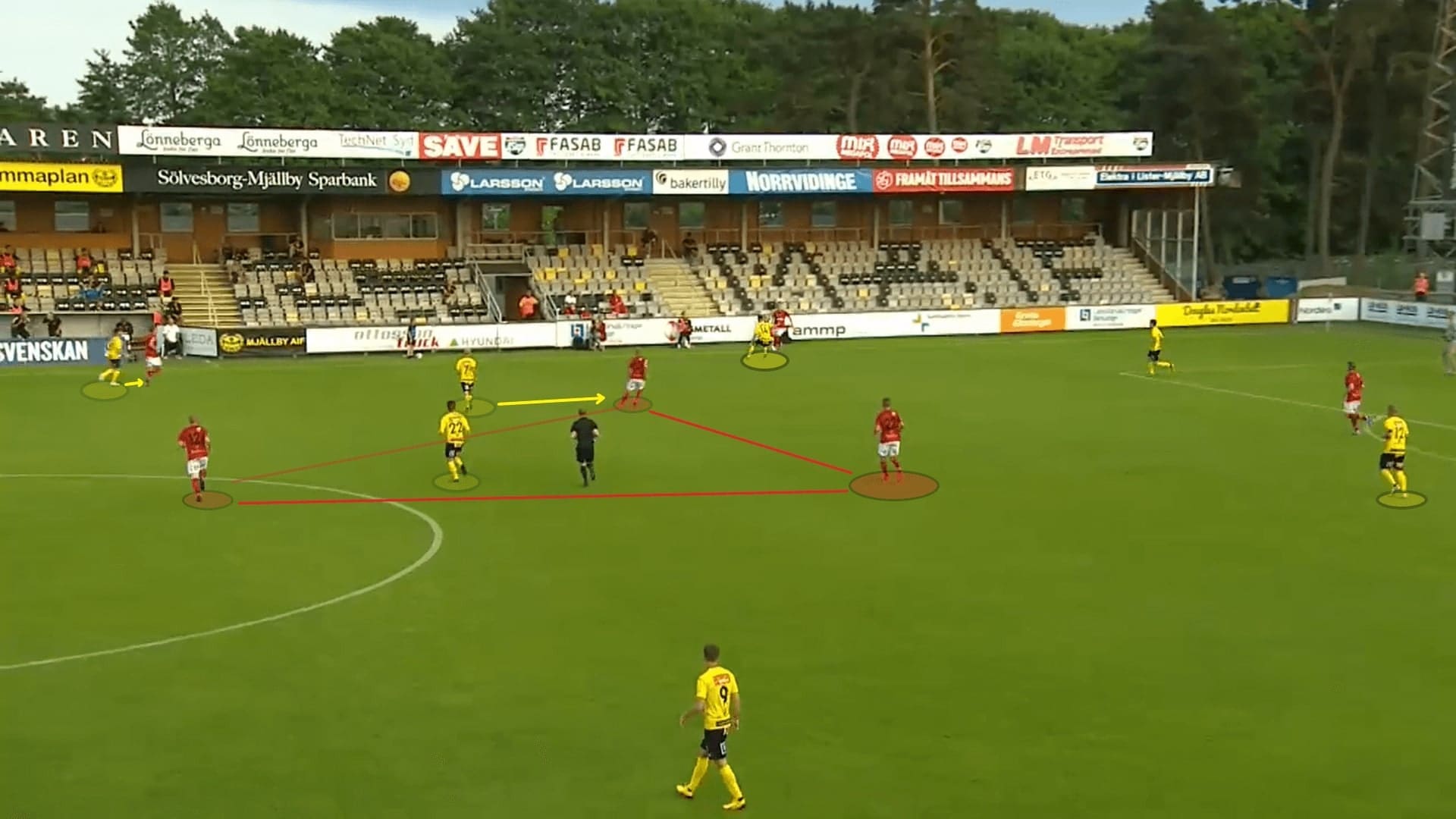
Defensive block
Lastly, we are addressing the low block of Mjällby. Just like many teams playing in a back five, the defensive shape was often a 5-5. Half of the team were the back five, staying deeper and leaving the other five to stay narrow at the centre. The top priority should be denying the opponents from accessing the centre.
This approach should be the main shape being adopted against stronger opponents, such as the game against Malmö FF in the first Allsvenskan game.
In this image, we could see the effectiveness of the block – a numerical superiority at the centre. Mjällby have overloaded Malmö at the centre. This has forced the opponent to go wide, and Lantz men were always ready to set the deep block for defending crosses.
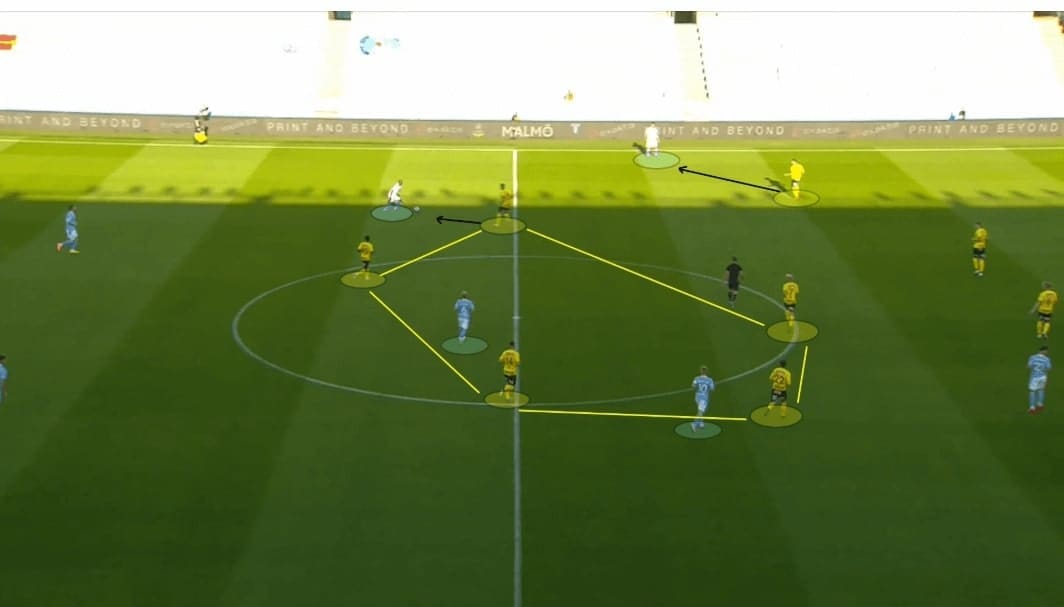
Similar to the pressing, Mjällby’s midfield duo was not prioritising covering the first line. Instead, they were more aware of the vertical distance with the centre-backs, trying to cover the centre.
Here, we drew the 5-5- shape of Mjällby. Since the striker: Bergström seldom apply pressure to the ball, the attacking team could pick an option without urgency. So, the blue shirt in front of the defensive line was found with a vertical pass.
However, the attack could hardly develop as the Mjällby midfield duo reacted quickly and compressed spaces, forcing the return pass out of spaces between the defence. The opponents had to reorganize the attack.
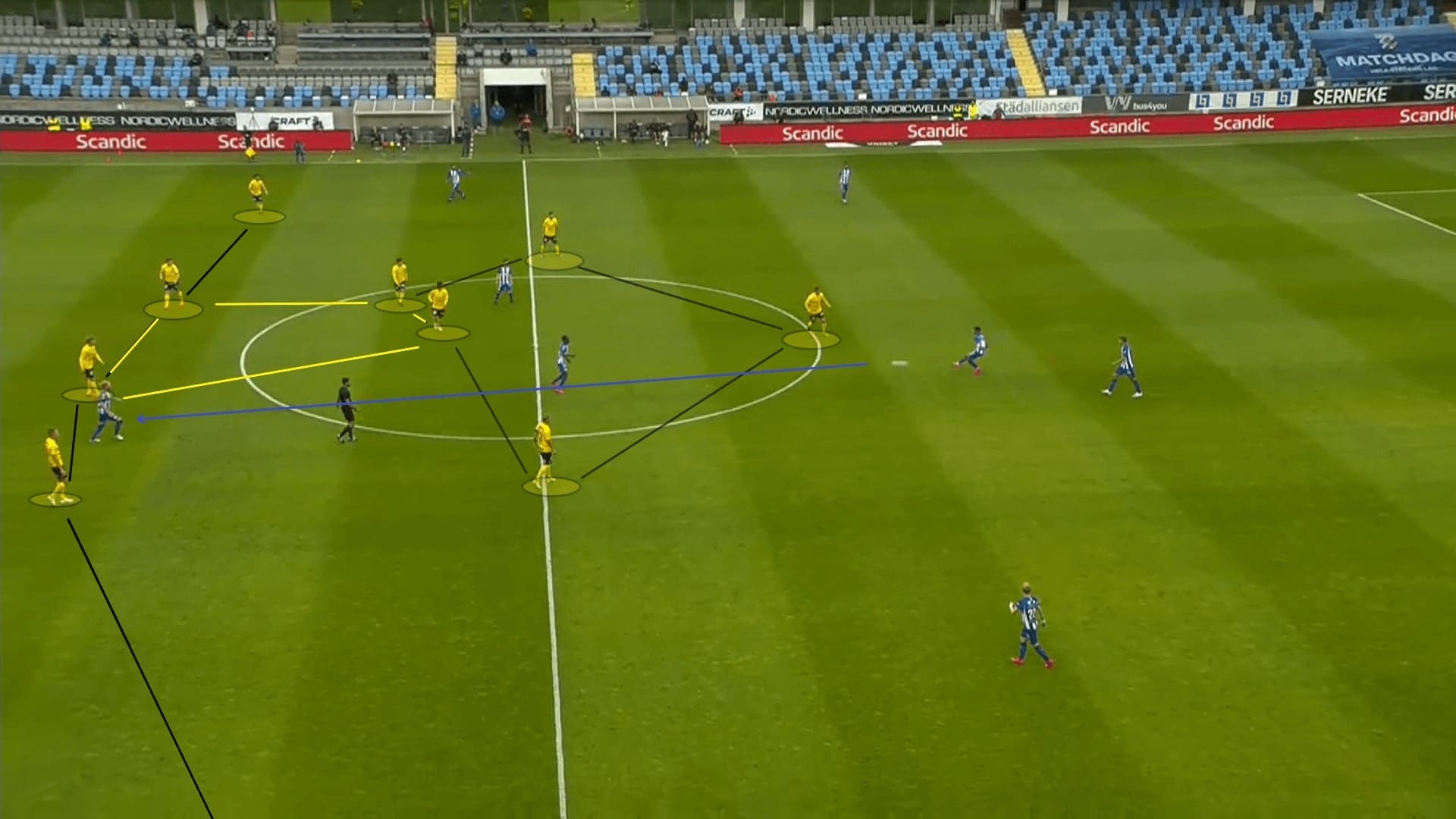
Final remarks
It was always difficult to get good results with a newly promoted team, especially when the head coach was new to the players. We have seen Mjällby remained a passive side on the pitch, waiting for the counter-attacking opportunities. Sabovic is the main man, his performance is going to be pivotal to the fate of the team like Kevin De Bruyne at Manchester City. We will see how Lantz made the tactical tweaks according to the conditions, and they are probably going to work more on the set-pieces, using this as another strategy to generate opportunities.

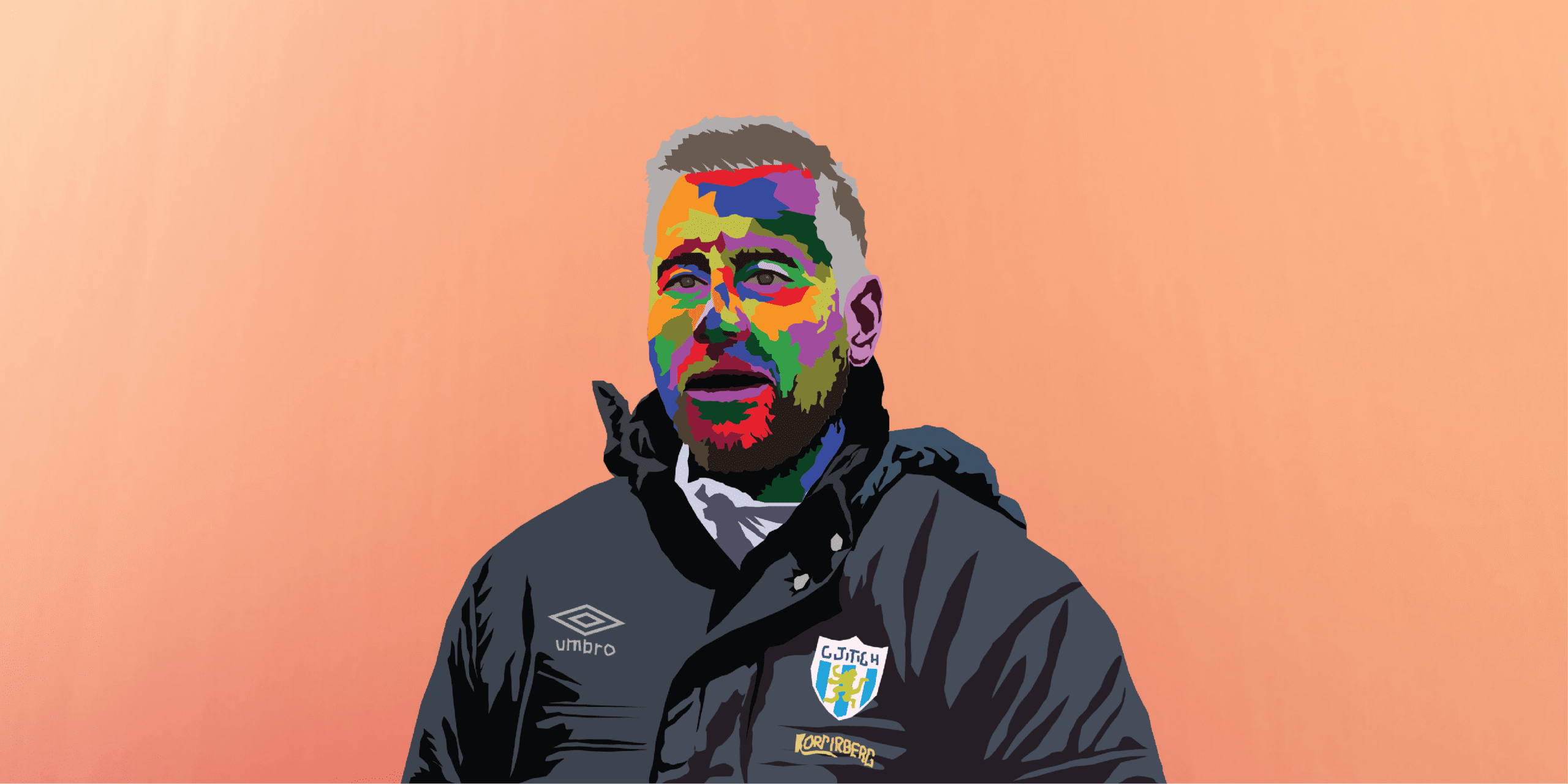



Comments